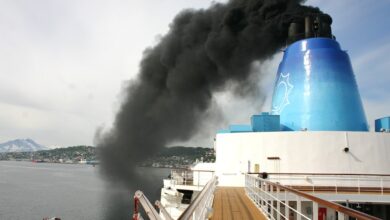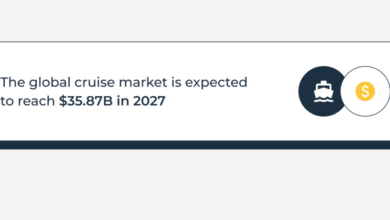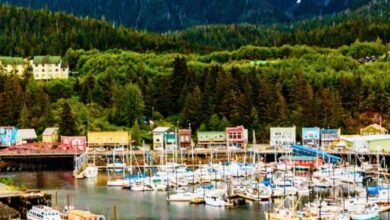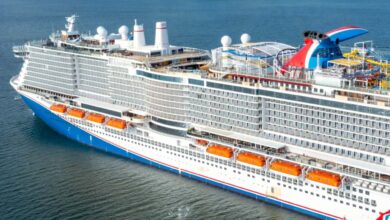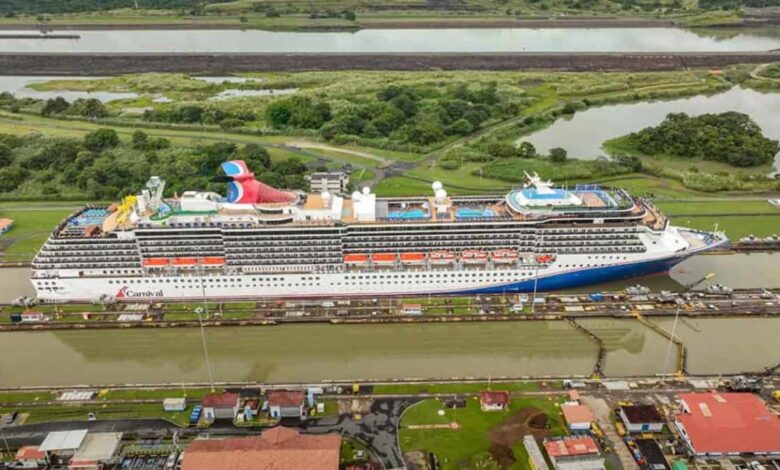
Bigger Cruise Ships, Wider Panama Canal
A widened Panama Canal will accommodate bigger cruise ships, ushering in a new era of maritime travel. Imagine colossal cruise liners, previously restricted by the canal’s dimensions, now able to traverse the isthmus. This momentous project promises a surge in passenger capacity, a boon for cruise lines, and significant economic implications for Panama and neighboring countries. However, it also presents challenges in terms of infrastructure, safety, and environmental impact.
Let’s delve into the details.
The current size limitations of cruise ships navigating the Panama Canal are well-documented. The widening of the canal will allow for a substantial increase in the size of these vessels, potentially doubling or even tripling their passenger capacity. This will have a profound effect on the cruise ship industry, driving economic growth in related sectors while also raising concerns about environmental sustainability and infrastructure adjustments.
The intricate interplay of economic benefits, environmental considerations, and infrastructure needs will be a crucial factor in determining the long-term success of this ambitious project.
Impact on Cruise Ship Industry
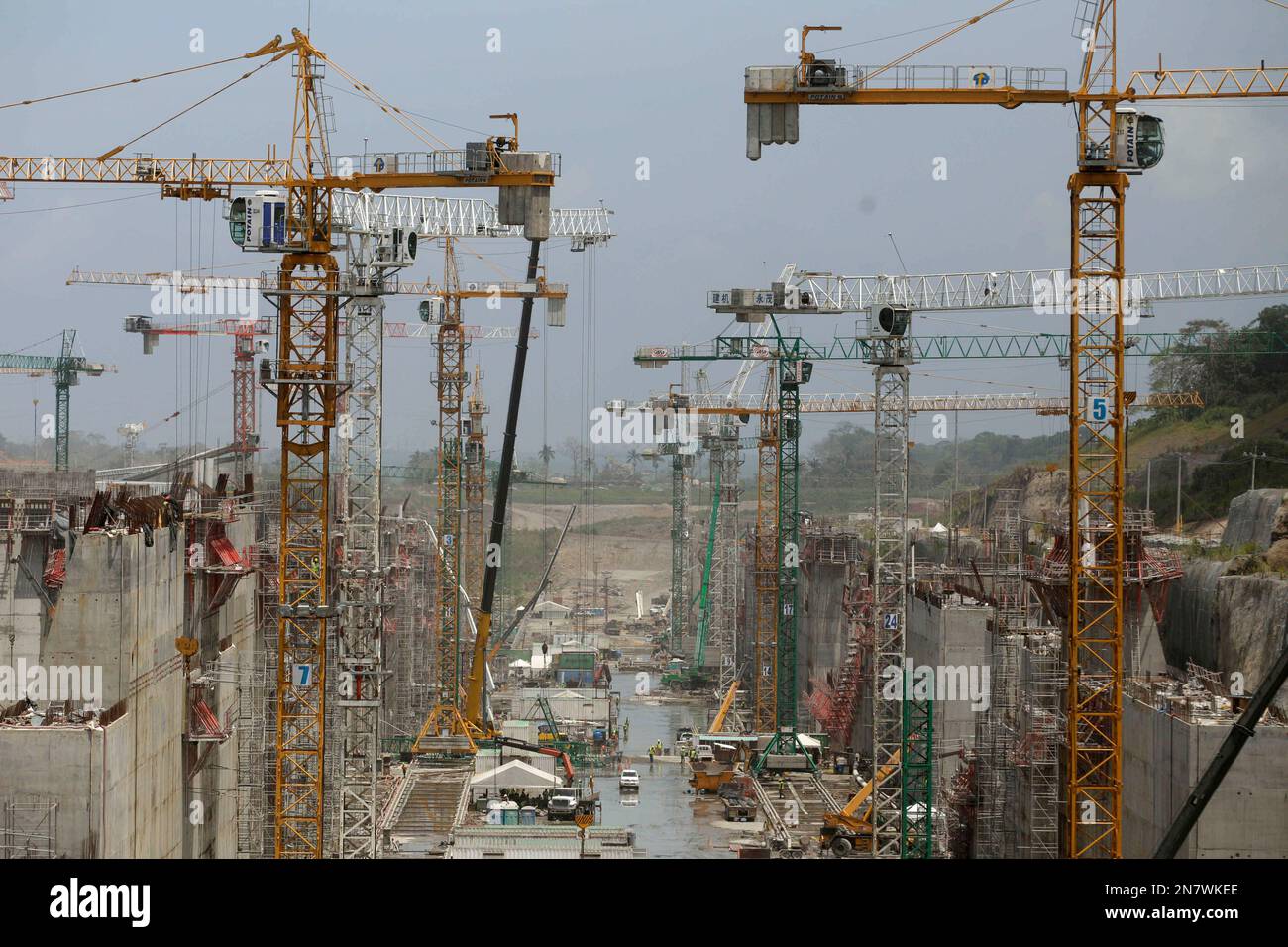
The widening of the Panama Canal promises a significant shift in the cruise ship industry, allowing larger vessels to traverse the vital waterway. This expansion opens up new opportunities for cruise lines, but also presents challenges in terms of design, operation, and market competition. The current limitations of the canal are forcing a reevaluation of ship sizes and operational strategies, with the potential for a substantial increase in passenger capacity and cruise line profitability.The current Panama Canal restricts the size of cruise ships that can pass through.
This limitation has historically been a significant factor in cruise ship design and operational planning. It dictates the maximum dimensions of ships, influencing everything from passenger capacity to the overall layout and amenities offered. This constraint has also impacted the profitability of cruise lines, as they are limited in the size of ships they can deploy to maximize their revenue potential.
Current Size Limitations
The existing Panama Canal has strict size limitations for vessels. These limitations are expressed in terms of overall length, beam (width), and draft (depth). Ships exceeding these dimensions are unable to transit the canal, forcing them to use alternative, often more expensive and time-consuming, routes. This restriction directly impacts the design and operation of cruise ships.
Anticipated Increase in Ship Sizes
Following the canal widening, cruise lines will be able to deploy significantly larger vessels. This will allow for greater passenger capacity, offering more amenities and activities onboard, and potentially leading to increased profitability. Increased passenger capacity allows cruise lines to potentially increase their revenue per voyage. Larger ships also create more room for a wider range of amenities and services.
Potential Impact on Profitability
The increased passenger capacity on larger ships translates into higher potential revenue streams for cruise lines. However, the increased costs associated with designing and building these larger vessels, along with potential operational challenges, must be considered. There is a delicate balance between cost and revenue generation that cruise lines must manage effectively.
A widened Panama Canal means bigger cruise ships can now sail through, opening up exciting new possibilities for travel. This increased capacity is fantastic news for companies like AMA Waterways, which is celebrating a decade of travel excellence by launching a special agent contest, ama waterways launches 10th anniversary agent contest. With more room for larger vessels, more luxurious and extensive cruise itineraries will become available, potentially attracting even more travelers to the waters and the companies like AMA Waterways.
Passenger Capacity Comparison
Currently, the average cruise ship transiting the canal may carry around 3,000 passengers. With the canal widening, cruise lines can deploy vessels carrying upwards of 5,000 or even more passengers. This considerable increase in passenger capacity could significantly alter the competitive landscape in the cruise industry.
Potential Challenges in Design and Operation
Designing and operating larger cruise ships in the widened canal presents unique challenges. Navigation in the expanded locks and channels will require advanced technologies and procedures. Furthermore, the increased size of ships necessitates improvements in safety protocols, crew training, and emergency response capabilities.
A widened Panama Canal will finally allow those massive cruise ships to sail through, opening up new possibilities for travel. However, recent storms, like the impact of Sandy on travel plans, have shown how unpredictable weather can disrupt even the most carefully laid plans for cruises and other types of travel. For instance, airlines and cruise lines are altering their schedules due to these weather-related issues, which in turn will affect the flow of big cruise ships through the widened canal.
Hopefully, once the canal is fully functional, the cruise ship industry will recover from these setbacks and we’ll see more options for these large ships to navigate.
Anticipated Growth in the Cruise Ship Market
The widening of the Panama Canal is anticipated to trigger significant growth in the cruise ship market. The ability to transport larger ships will stimulate demand, encouraging the construction of new vessels and the expansion of existing fleets. This anticipated increase in the cruise ship market will lead to more destinations and options for cruise enthusiasts.
A widened Panama Canal means bigger cruise ships can sail through, opening up exciting new possibilities for travel. Imagine the possibilities for luxurious getaways, but perhaps a healthy dose of Czech Republic spa towns, like those found in a healthy dose of Czech Republic spa towns , might be a better fit for your relaxation needs, before or after your grand cruise voyage.
This increased capacity for the Panama Canal should certainly benefit the travel industry in the long run.
Comparison of Maximum Ship Sizes
| Ship Size Before | Ship Size After | Percentage Increase |
|---|---|---|
| Length: ~290 meters Beam: ~40 meters Draft: ~12 meters |
Length: ~400 meters Beam: ~50 meters Draft: ~15 meters |
~38% (Length), ~25% (Beam), ~25% (Draft) |
Economic Implications
The widening of the Panama Canal to accommodate larger cruise ships presents a significant opportunity for economic growth in Panama and surrounding countries. This expansion promises to boost tourism, generate new jobs, and increase revenue for ports and related services. However, the success of this project hinges on careful planning and execution to maximize its economic benefits.
A widened Panama Canal will definitely make things easier for those massive cruise ships. Imagine the logistical challenges of feeding all those passengers, though – a day in the life of a top executive chef like Hal, for instance, a day in the life hal executive chef , would likely involve meticulous planning and a huge kitchen crew.
All that said, the larger ships will definitely be able to navigate the expanded canal, opening up new possibilities for global travel.
Potential Economic Benefits for Panama and Surrounding Countries
The widened canal will attract a greater volume of larger cruise ships, leading to an increase in passenger numbers and revenue for Panama and its neighboring countries. This influx of tourists will stimulate economic activity in various sectors, including accommodation, transportation, and retail. The potential for increased tourism revenue is substantial, and could benefit countries such as Costa Rica, Colombia, and others in the region.
Job Creation in the Maritime Sector
The increased cruise ship traffic will likely lead to a significant increase in demand for maritime workers. This includes captains, crew members, port workers, and support staff. Training programs and initiatives focused on developing skilled labor in the maritime sector will be crucial for maximizing the employment opportunities presented by this expansion.
Financial Investment Required for the Widening Project
The widening of the Panama Canal is a massive undertaking requiring substantial financial investment. The precise cost will depend on factors such as the specific engineering solutions adopted and unforeseen complications during construction. Historical precedents for large infrastructure projects, such as the original canal expansion, provide a framework for estimating the required investment, which is expected to be substantial.
Long-Term Economic Effects of Increased Cruise Ship Traffic
The long-term effects of increased cruise ship traffic extend beyond the immediate economic gains. Increased tourism can lead to infrastructure development, improved transportation networks, and the creation of new businesses, fostering sustained economic growth. The ripple effect of increased economic activity will positively impact related sectors such as hospitality, retail, and local handicrafts.
Anticipated Revenue Increase for Ports and Related Services
The increased volume of cruise ships will translate to higher revenue for ports and related services. This includes docking fees, baggage handling, and other ancillary services. The scale of the revenue increase will depend on factors such as the pricing strategies employed and the efficiency of port operations. Examples of similar increases in port revenue in other regions can be used as benchmarks for forecasting.
Potential Changes in Tourist Numbers for Destinations Served by Cruise Ships
Cruise ship destinations will experience a rise in tourist numbers as larger vessels offer access to a wider range of ports. The increase in tourist arrivals will be contingent upon the attractiveness of the destinations to cruise passengers and the effectiveness of marketing efforts.
Predicted Economic Impact on Panama and Neighboring Countries
| Country | Sector | Predicted Impact |
|---|---|---|
| Panama | Tourism | Significant increase in tourist arrivals and revenue, leading to growth in hotels, restaurants, and other related businesses. |
| Panama | Maritime Services | Increased demand for specialized workers, creating new jobs and boosting the maritime sector’s contribution to the economy. |
| Panama | Infrastructure | Increased investment in port infrastructure, roads, and other facilities to support the growing cruise ship traffic. |
| Costa Rica | Tourism | Potential increase in tourist arrivals, particularly in coastal destinations, benefiting local businesses. |
| Colombia | Tourism | Potential increase in cruise ship visits to Colombian ports, stimulating economic activity in coastal areas. |
| Other Countries | Tourism | Potentially increased cruise ship arrivals and revenue, creating economic growth opportunities in coastal areas. |
Environmental Considerations
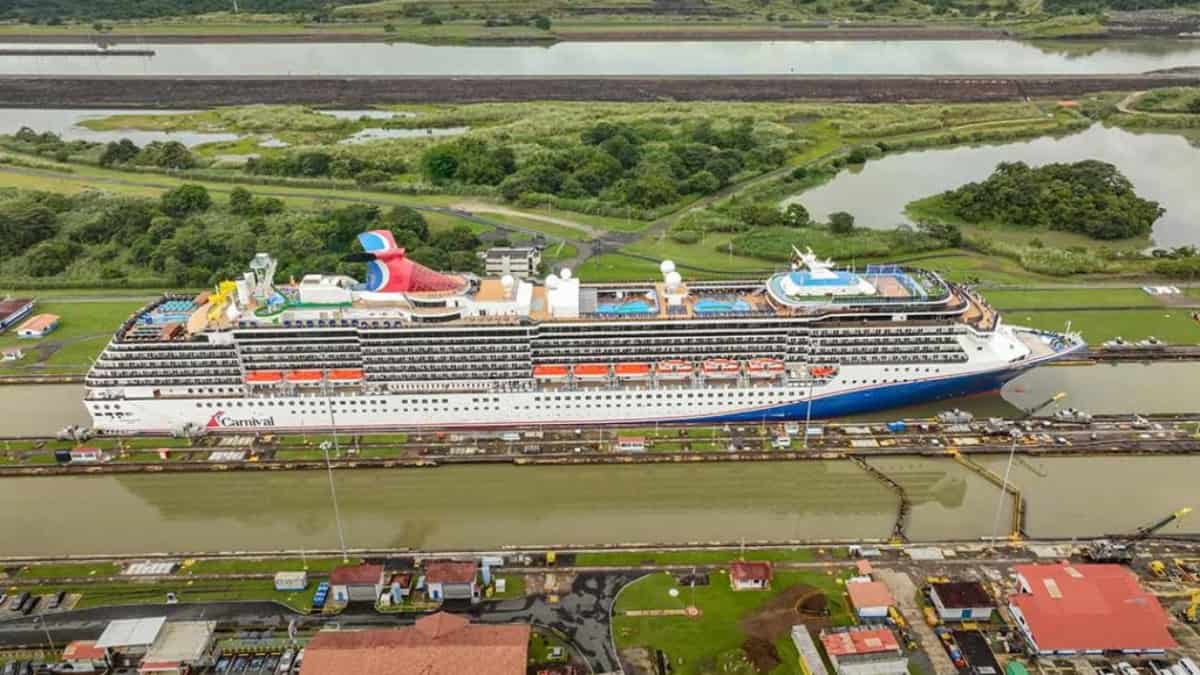
The widening of the Panama Canal to accommodate larger cruise ships presents significant environmental challenges. Increased traffic inevitably leads to higher levels of pollution and waste discharge, impacting sensitive marine ecosystems and requiring careful consideration of mitigation strategies. This section delves into the environmental footprint of larger cruise ships, the regulations governing them, and potential solutions to minimize the harm.
Environmental Impact of Increased Cruise Ship Traffic
The rise in cruise ship traffic, especially with larger vessels, exacerbates existing environmental concerns. Cruise ships, even with modern engines, contribute to air and water pollution. Exhaust emissions release harmful greenhouse gases and particulate matter, potentially impacting air quality in coastal regions. Discharge of wastewater, including greywater and sewage, can introduce pathogens and excess nutrients into the marine environment, fostering harmful algal blooms and disrupting delicate marine ecosystems.
Solid waste disposal also poses a problem. Improperly managed garbage and food waste can contaminate beaches and harm marine wildlife.
Potential Strategies for Minimizing Environmental Damage from Cruise Ships
Several strategies can minimize the environmental impact of cruise ships. Implementing stricter emission standards for cruise ships, mandating the use of cleaner fuels, and promoting the adoption of energy-efficient technologies are crucial. Improved wastewater treatment systems aboard cruise ships are essential to reduce the discharge of pollutants. Cruise lines can also partner with local authorities to implement effective solid waste management systems.
Developing comprehensive waste reduction programs, including composting and recycling initiatives, is critical.
Environmental Regulations and Standards Applicable to Cruise Ships
International Maritime Organization (IMO) regulations and standards are crucial for mitigating the environmental impact of cruise ships. The IMO sets standards for emissions, wastewater discharge, and garbage management. These regulations vary depending on the type of vessel and the location of operations. Different countries may also have their own environmental regulations. Compliance with these regulations is vital for cruise operators.
Potential Measures to Mitigate Impact on Marine Ecosystems
Strategies to mitigate the impact on marine ecosystems include establishing marine protected areas (MPAs) around critical habitats, supporting research to better understand the effects of cruise ship activities on marine life, and promoting sustainable tourism practices within coastal regions. Developing clear guidelines for responsible cruise ship operations near sensitive marine life areas can minimize disturbance and stress on these environments.
Comparison of Environmental Footprints of Various Cruise Ship Designs
Different cruise ship designs have varying environmental footprints. Ships with more advanced propulsion systems, employing hybrid or electric technologies, tend to have lower emissions compared to traditional vessels. The size and design of a ship’s hull also influence fuel consumption and emissions. Implementing technologies like hull-form optimization and alternative fuels can significantly reduce the environmental impact of individual ships.
Potential Impact of Larger Cruise Ships on Sensitive Marine Life
Larger cruise ships, due to their increased size and presence, can have a greater impact on sensitive marine life. Noise pollution from ship engines can disrupt communication patterns of marine mammals. Discharges of waste and chemicals can harm aquatic organisms, impacting the food chain and overall ecosystem health. The increased presence of large cruise ships may alter feeding behaviors and migration patterns of certain species.
Summary Table of Potential Environmental Impacts of the Widened Canal
| Type of Impact | Description | Mitigation Strategies |
|---|---|---|
| Air Pollution | Increased emissions of greenhouse gases and particulate matter from ship exhaust. | Stricter emission standards, use of cleaner fuels, and advanced engine technologies. |
| Water Pollution | Discharge of wastewater, including greywater and sewage, and chemical pollutants. | Improved wastewater treatment systems, stricter discharge regulations, and proper waste disposal methods. |
| Solid Waste | Improperly managed garbage and food waste contaminating beaches and harming marine life. | Comprehensive waste reduction programs, recycling initiatives, and partnerships with local authorities for effective waste management. |
| Noise Pollution | Disturbance of marine mammals and other sensitive species due to ship noise. | Development of quieter ship designs, use of noise-reducing technologies, and establishing noise limits in sensitive areas. |
| Habitat Disruption | Increased vessel traffic potentially impacting sensitive marine ecosystems. | Establishing marine protected areas (MPAs), implementing clear guidelines for responsible cruise ship operations in sensitive areas, and promoting sustainable tourism practices. |
Infrastructure Adjustments: A Widened Panama Canal Will Accommodate Bigger Cruise Ships
The widening of the Panama Canal to accommodate larger cruise ships necessitates significant infrastructure adjustments across the entire canal system. These adjustments must be carefully planned and executed to ensure the smooth and safe passage of these vessels, while maintaining the canal’s operational efficiency and environmental integrity. The scale of these upgrades requires a comprehensive approach encompassing ports, locks, navigation systems, and supporting services.
Port and Docking Facility Modifications
The existing port facilities along the canal must be upgraded to handle the increased size and weight of cruise ships. This involves expanding docking areas, reinforcing existing infrastructure to accommodate larger vessels, and improving loading and unloading capabilities. New berthing structures and improved maneuvering space are essential. Consideration must be given to providing additional support services like storage facilities for cargo and supplies.
Cruise ship terminals need to be designed to manage passenger flows efficiently and safely, including ample waiting areas and enhanced security measures.
A widened Panama Canal opens up exciting possibilities for larger cruise ships, allowing for more luxurious and spacious travel experiences. This is great news for those looking to explore the world’s waterways. Seeing as how bigger ships will now be able to navigate the canal, it’s exciting to see how this impacts the cruise ship industry as a whole.
This also relates to news of AK unveiling their renovated Sanctuary Sun IV, showcasing the latest in luxury travel accommodations. With improved amenities and designs, this new standard sets a new benchmark for cruise ship comfort. A widened Panama Canal will definitely accommodate bigger cruise ships, paving the way for more extravagant and accessible travel options in the future.
Canal Locks and Navigation System Enhancements
The canal locks, the heart of the transit system, need substantial modifications to accommodate the increased dimensions of larger cruise ships. This involves reinforcing the lock walls and gates, potentially increasing the lock chamber size and improving the hydraulic systems for faster and more controlled operation. Upgrades to the navigation systems, including advanced radar and GPS technologies, are critical for safe and precise vessel guidance.
Improved communication systems are also required to ensure clear communication between the ships and canal authorities. Real-time monitoring systems for the lock operation and vessel positioning are also important for optimized transit times.
Supporting Services Upgrades
To facilitate the passage of larger cruise ships, water and electricity supply systems need significant enhancements. Increased water capacity is needed for onboard use, while higher electricity output is required to power larger vessels and support the increased operations. Backup systems are vital for maintaining service during periods of high demand. Reliable communication networks are crucial for seamless navigation and coordination.
Logistics and Transportation Improvements
Efficient handling of increased cargo and passenger volumes demands improvements in logistics and transportation. This includes optimizing cargo handling systems, upgrading transportation infrastructure to support the increased volume of passengers and goods, and establishing robust communication systems to track shipments. New technologies like automated cargo handling systems can significantly improve efficiency and reduce delays. Collaboration between different stakeholders in the shipping industry is key for a smooth transition.
Existing Canal Infrastructure Improvements
Upgrades to the existing canal infrastructure, including the embankments, bridges, and roads, are crucial to support the larger vessels. The stability and integrity of these structures must be reinforced and upgraded to withstand the increased load and stress. New navigational aids and improved signage are necessary for increased safety. Specific consideration should be given to improving drainage systems to avoid flooding in areas prone to heavy rainfall.
New Technologies for Larger Cruise Ships
Emerging technologies, like advanced automation systems, can be employed to improve the safety and efficiency of operations. These systems can assist in navigation, docking, and cargo handling. Utilizing drones for surveillance and inspection of the canal infrastructure and vessels can enhance safety and maintenance.
Infrastructure Upgrades Table
| Location | Type of Upgrade | Description |
|---|---|---|
| Canal Locks | Reinforcement | Strengthening lock walls and gates to accommodate larger vessels. |
| Canal Locks | Hydraulic System Upgrade | Improving hydraulic systems for faster and more controlled operation. |
| Ports | Docking Facilities Expansion | Expanding docking areas and reinforcing existing infrastructure for larger vessels. |
| Ports | Cargo Handling Systems | Implementing automated cargo handling systems to improve efficiency. |
| Supporting Services | Water Supply | Increasing water capacity for onboard use. |
| Supporting Services | Electricity Supply | Increasing electricity output to power larger vessels. |
| Navigation Systems | Advanced Technology Integration | Integrating advanced radar, GPS, and communication systems. |
| Canal Infrastructure | Embankment Reinforcement | Strengthening embankments, bridges, and roads to support larger vessels. |
Safety and Security
The widening of the Panama Canal to accommodate larger cruise ships presents both opportunities and challenges, particularly concerning safety and security. Ensuring the safe passage of these vessels through the canal, while safeguarding passengers and crew, is paramount. Robust protocols, advanced technology, and meticulous planning are crucial to mitigating potential risks.
Safety Protocols for Handling Larger Ships, A widened panama canal will accommodate bigger cruise ships
The increased size and weight of cruise ships necessitate a re-evaluation of existing safety protocols. Crucially, navigation and communication systems must be upgraded to accommodate the larger vessels and their complex movements. This includes improved communication channels between the ship and the canal authorities, allowing for real-time monitoring and faster response times in case of emergencies.
Potential Improvements to Security Measures
Security measures at ports and within the canal must be enhanced to protect against potential threats. This may involve enhanced surveillance systems, increased security personnel, and improved coordination between different agencies. For example, the implementation of advanced security systems like facial recognition and biometric verification at boarding and disembarkation points can deter unauthorized access and enhance security.
Required Changes to Navigation and Communication Systems
Modernizing navigation and communication systems is vital for handling the larger cruise ships. Advanced radar systems, GPS tracking, and automated collision avoidance systems can enhance situational awareness and help prevent accidents. Real-time data sharing between the ship and the canal authorities will also improve response times in emergency situations. The introduction of digital navigation logs and automated incident reporting systems can ensure a complete record of every voyage.
Potential Risks and Hazards
Larger cruise ships, due to their size and complexity, present certain inherent risks. Potential hazards include mechanical failures, adverse weather conditions, and human error. Additionally, the increased number of passengers and crew necessitates enhanced emergency response protocols. For example, a potential risk is a mechanical failure during a transit of the canal, requiring immediate response from the canal authorities and the ship’s crew.
Measures to Enhance Safety for Passengers and Crew
Safety for passengers and crew must be prioritized. This includes regular safety drills, the provision of life jackets and other safety equipment, and clear communication protocols. Well-trained personnel and sufficient emergency response teams are crucial for handling emergencies. For instance, regular crew training exercises and simulations can significantly improve the crew’s ability to respond to emergencies.
Contingency Plans for Potential Accidents or Emergencies
Detailed contingency plans for various scenarios, such as mechanical failures, collisions, or severe weather, must be developed and regularly reviewed. These plans should include procedures for evacuation, rescue, and medical assistance. Clear communication channels between the ship, canal authorities, and emergency services are paramount.
Safety Protocols Table
| Scenario | Procedure | Personnel Involved |
|---|---|---|
| Mechanical Failure (Engine) | Assess damage, notify canal authorities, implement emergency procedures, initiate evacuation if necessary. | Ship’s engineering team, canal authorities, emergency response teams |
| Collision with another vessel | Assess damage, notify canal authorities, implement emergency procedures, initiate evacuation if necessary. | Ship’s bridge crew, canal authorities, emergency response teams |
| Severe Weather Conditions (storm) | Seek safe harbor, secure the ship, follow canal authorities’ instructions. | Ship’s captain, canal authorities, emergency response teams |
| Medical Emergency on Board | Assess the situation, contact medical personnel, provide first aid as needed, notify canal authorities. | Ship’s medical staff, canal authorities, emergency medical services |
Closing Notes
In conclusion, a widened Panama Canal presents a complex tapestry of opportunities and challenges. While the prospect of bigger cruise ships promises significant economic gains for Panama and the surrounding region, it also necessitates careful consideration of environmental impacts, infrastructure upgrades, and safety protocols. This project marks a pivotal moment in maritime history, and its success will depend on a balanced approach that addresses all facets of this transformative endeavor.
User Queries
What are the anticipated environmental regulations for larger cruise ships?
Stricter environmental regulations will likely be implemented to address the increased pollution and waste generated by larger cruise ships. These regulations may include limitations on emissions, waste disposal procedures, and enhanced monitoring of ship activities.
How will the widening impact the existing cruise ship infrastructure?
Ports and docking facilities will require significant upgrades to accommodate larger ships. This includes widening berths, strengthening docks, and possibly building new facilities to handle the increased traffic and cargo.
What are the potential risks associated with increased cruise ship traffic?
Increased cruise ship traffic may lead to heightened congestion in the canal, potentially increasing the risk of accidents or delays. Safety protocols and contingency plans will need to be in place to address these risks.
What is the estimated timeframe for the canal widening project?
Unfortunately, precise timeframe information is not included in the provided Artikel. Further research would be required to provide an accurate estimate.

